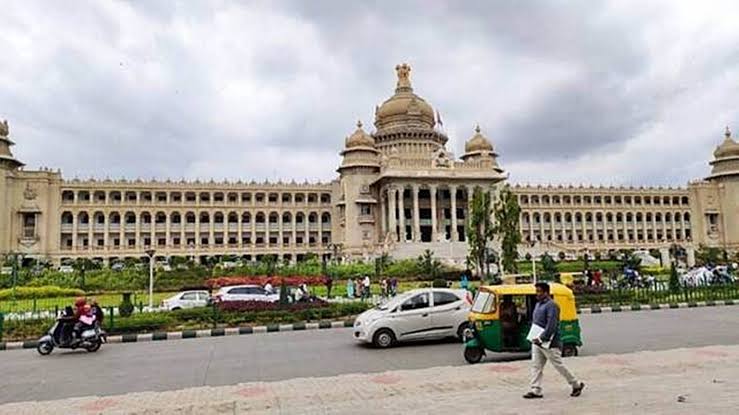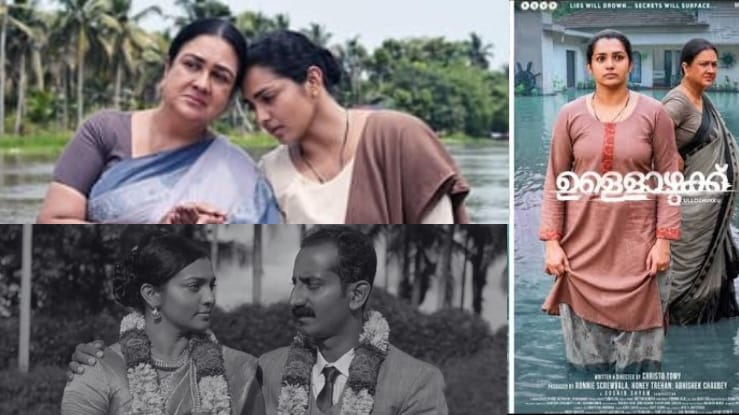“…his [Man’s] fear is of the fluid, that which flows, is mobile, which is not a solid ground/ earth or mirror for the subject” – French philosopher and linguist Luce Irigaray, in ‘Marine Lover of Friedrich Nietzche’, the first part of her celebrated trilogy, which emphasised on the deep and complex relationship between the feminine and the fluid, symbolised by water too.

Wetlands, swamps and deltas, being spaces that defy concrete categorizations; they question the demarcations between water and land. These are spaces constantly being reconfigured by the flow of water. Thus, they underline the relational porosity between land and water. What rouses my curiosity here are the ways in which people continue to inhabit these amphibious terrains, the social life of which is constituted by the oft diverted course of water and its flows.
It is against this framework that I apprehend Christo Tomy’s directorial debut, ‘Ullozhukku’ (Undercurrent), a family drama that unfolds in the waterscapes of Kuttanad. ‘Ullozhukku’ pivots around the lives of two women, the newly-wed Anju and her formidable mother-in-law, Leelamma, who are forced to reckon with the revelation of their carefully guarded secrets, following the death of Thomaskutty, Anju’s husband. Torrential rains lash their islet, flooding their home and surroundings. To Leelamma’s dismay, logistical difficulties crop up, making it difficult to carry out a proper funeral for Thomaskutty.

These situations may look and sound dramatic, adding to the fictional narrative of the movie, but this could well be an actual slice of life from Kerala, the South Indian State. The tropical state of Kerala receives an annual rainfall of 3,055 mm on average. More than half of this quantum of rain is precipitated by the onset of South-West monsoons. An ‘intensely wet place’ is how Mathew Barlow, the renowned professor of Climate Science describes the State. And, indeed, an exploration of the affective attachments to water in this region holds immense ethnographic potential.
Kuttanad, a deltaic formation composed of an intricate network of canals, polders, embankments, bridges and narrow roads, is sprawled across the districts of Alappuzha, Pathanamthitta and Kottayam. Local legend has it that the landmass that constitutes present-day Kuttanad was once a patch of forestland, destroyed by a series of wildfires that reduced it to ashes. The residual peat bogs are extremely fertile, as a result of which, paddy cultivation takes place in the region. Mathew Kuriakose, who studied the region extensively and also wrote the much referred to essay “The Saga of Commons in Kuttanad: Appropriations, Contests and Developments” offers a comprehensive account of the epochal transformations in the region, spearheaded by various actors at different points of history, which has led to the appropriation and eventual enclosure of commons.

Lying below sea-level, paddy cultivation here is largely carried out in land reclaimed from backwaters— Kayalnilams. Part of the larger Vembanad-Kol wetland system, Kuttanad, silted by the discharge of five major rivers, is vulnerable to periodic floods. The indeterminacy of having the ground beneath your feet sink by an unprecedented rise of water levels looms the life of its inhabitants. What does it mean to tend for your plants knowing fully well that they will eventually bend to the might of the deluge? How do you spend hours toiling on the field, despite the foreboding that the golden seeds will absorb moisture and swell, following an ill timed downpour? How do you rear cattle when you know that when the rescue boat arrives, you will not pay heed to the subdued turn your eyes to have a last look of sad bovine?
In her research which teases out the relationship between pain and transformation of material environment, Marine Biologist Catalina Cuéllar Gempeler talks about landscapes being saturated with melancholia. In Ullozhukku, there exists an intimate relationship between the pain felt by the mother-daughter duo and the flood-hit environment. Leelamma, played by the veteran actress Urvashi, bears a grief so heavy that it fills her lungs. Anju, the daughter-in-law (Parvathy Thiruvoth) wades through the viscous waters of pain. When it rises up to the level of her neck, she erupts. As flood waters stagnate within the house, the tension between the family members reaches its crescendo. Gradually, as the waters recede, the friction dissolves. The equilibrium of the hydrological cycle is restored.
What bound these women together was the suffering and pain of Thomaskutty, Anju’s husband and Leelamma’s only son. Both women happen to witness Thomaskutty reeling under the throes of pain inflicted by his tumor, and through the act of witnessing and caretaking, they try to grasp the ungraspable pain of the other. The academic Sara Ahmed, who has dwelt at length on the diverse cultural and emotional manifestations of pain argues that pain generates contingent attachments. No pain is private. It flows through the patchwork of sociality. While neither the mother or wife can inhabit the boundaries of Thomaskutty’s body delineated by his experience of pain, their desire to know this pain compels them to touch him, to try and cup his suffering in their palms.

Ahmed cautions us, ‘not all attachments are loving’. The sexual advances that the invalid husband makes towards her makes Anju recoil. Upon her son’s death, a grieving Leelamma forcefully grabs Anju’s hands to entwine them with her own – a move that Anju resists. In the universe of shared pain, bodily boundaries are redefined and reasserted.
The transmutability and multivocality of water makes it a powerful metaphor. Perhaps, one can extend it to understand the women themselves. Anju, although encumbered by patriarchal codes of honor, exhibits remarkable fluidity. She is not afraid of breaching the dykes erected by a patriarchal society. She lets her sexuality drip and occupy the narrow crevices of pleasure which discreetly crack the terrain of a highly conservative society. Anju washes over Leelamma like a tide, who has, towards the end, lost her affinity to the norms of patriarchal family order that constrained her for a lifetime.
At the end of the film, we see Anju and Leelamma seated next to each other, in a boat. They plunge into the world of ‘ubiquitous wetness’, together this time, after having meandered variously. The idea of ‘ubiquitous wetness’, as delineated by Anuradha Mathur and Dilip Da Cunha in their concept of “Ocean of Wetness”, warns against preoccupation with predestined notions of land and water, and posits a confluence.

The geographical entity of Kuttanad, posited at the confluence of five rivers, symbolises this very idea. In a nuanced perspective, it could also be a mirage of land and water. Anju and Leelamma, are but two mortals, whose lives are entangled within this web of hydrosociality. Ullozhukku captures that entanglement rather wondrously.
Watch the trailer for the movie Ullozhukku below:
References Cited:
Ahmed, S. (2014). The cultural politics of emotion (2nd ed.). Edinburgh University Press.
Cuéllar Gempeler, Monica (2014). After Water: An Ethnography on Pain and the Material Environment, East of the Lagoon of Fúquene. McGill.
Kuriakose, Mathew. The Saga of the Commons in Kuttanad: Appropriations, Contests, Developments. June 2014.
Mathur, Anuradha, and Dilip da Cunha. 2020. “Wetness Is Everywhere: Why Do We See Water Somewhere?” Journal of Architectural Education 74 (1): 139–40.








